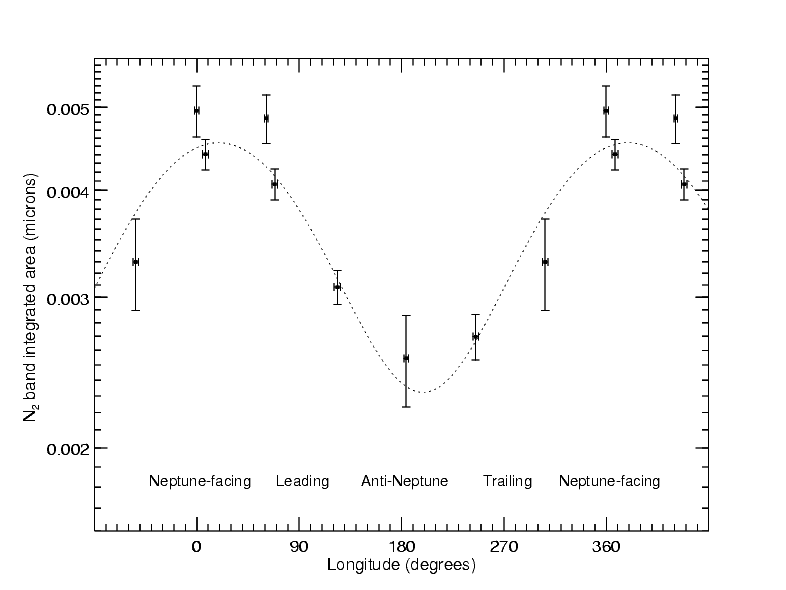
Near infrared spectral monitoring of Triton with IRTF/SpeX I: Establishing a baseline for rotational variability
Published in 2004: Icarus 172, 455-465.
W.M. Grundy1,3 and L.A. Young2,3
(1) Lowell Observatory, Flagstaff Arizona.
(2) Southwest Research Institute, Boulder Colorado.
(3) Visiting observer at NASA's IRTF, Mauna Kea, Hawai'i.
Abstract
We present eight new 0.8 to 2.4 Ám spectral observations of Neptune's satellite Triton, obtained at IRTF/SpeX during 2002 July 15-22 UT. Our objective was to determine how Triton's near-infrared spectrum varies as Triton rotates, and to establish an accurate baseline for comparison with past and future observations. The most striking spectral change detected was in Triton's nitrogen ice absorption band at 2.15 Ám; its strength varies by about a factor of two as Triton rotates. Maximum N2 absorption approximately coincides with Triton's Neptune-facing hemisphere, which is also the longitude where the polar cap extends nearest Triton's equator. More subtle rotational variations are reported for Triton's CH4 and H2O ice absorption bands. Unlike the other ices, Triton's CO2 ice absorption bands remain nearly constant as Triton rotates. Triton's H2O ice is shown to be crystalline, rather than amorphous. Triton's N2 ice is confirmed to be the warmer, hexagonal, N2 phase, and its CH4 is confirmed to be highly diluted in N2 ice.
